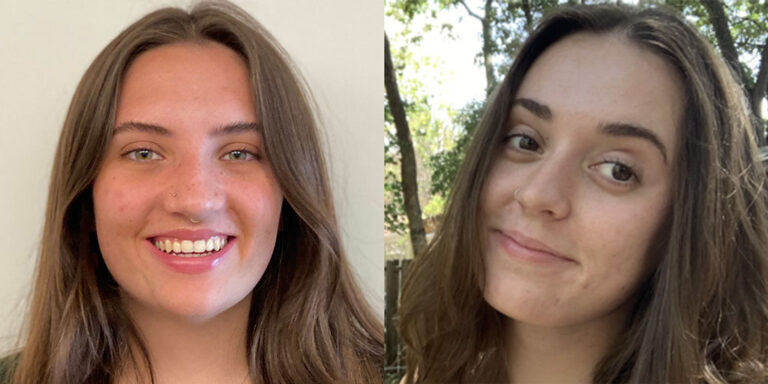What will be Presented at the 2021 AAG Meeting?
Jeong Chang Seong, Sanghoon JI, Ana Stanescu, Yubin Lee, and Chul Sue Hwang
Building off of an analysis completed for the cancelled in-person portion of the 2020 AAG Annual Meeting, Seong et al. have provided an update on presentation topics in anticipation of the 2021 AAG Annual Meeting.
A total of 2,952 papers and posters (2,648 papers; 304 posters) are scheduled to be presented at the AAG virtual annual meeting in April this year (numbers as of March 1, 2021). To help meeting participants and fellow geographers to find out what will be presented at the meeting, we summarized the AAG 2021 presentation submissions using the keyword network analysis method.

After collecting all keywords from the presentation submissions, raw keywords were cleaned with deletion, concatenation, standardization, normalization, lemmatization, and conversion techniques. A total of 20,550 keywords were split into single-word keywords. Only distinctive words were retrieved in each paper by deleting any duplicate words. A total of 4,145 distinctive keywords were identified from the 20,550 keywords. We used 30 as the keyword frequency threshold during network visualization. As a result, a keyword network diagram was constructed with 124 keywords as shown in Figure 1. In the figure, circle sizes reflect keyword frequencies, edge widths indicate co-occurrences between two keywords, and circle colors indicate cluster memberships.
Urban (311) was identified as the most frequent keyword at the 2021 AAG annual meeting, followed by COVID-19 (199), GIS (167), climate change (163), social (139), spatial (133), infrastructure (130), water (128), food (117), analysis (114), development (112) and health (111). Each number in parentheses indicates the frequency of the keyword. When the Louvain algorithm was applied for grouping keywords, ten (10) topical clusters were identified as shown in Table 1. Even if the Urban keyword appeared most frequently, the COVID-19 cluster had the largest number (779) of keywords as members. When the influence of each cluster was measured, the COVID-19 cluster was also most influential in the keyword network with the largest eigenvector centrality amount of 18.20%.
Cluster Name |
Count of Members |
Percent (%) Influence |
Top Five (5) Keywords |
| COVID-19 | 779 | 18.20 | covid19, GIS, spatial, analysis, health |
| Urban | 560 | 16.39 | urban, development, governance, city, planning |
| Land Cover | 615 | 12.36 | remote sensing, forest, change, land, machine learning |
| Climate Change | 459 | 11.51 | climate change, climate, resilience, risk, vulnerability |
| Political Ecology | 403 | 10.78 | infrastructure, water, environmental, justice, political ecology |
| Sustainability | 319 | 10.64 | food, agriculture, community, system, management |
| Critical Geography | 335 | 7.64 | social, education, place, feminist, race |
| Border | 272 | 5.60 | digital, migration, labor, usa, river |
| Mapping | 158 | 2.59 | tourism, map, cultural, national, history |
| Culture | 144 | 2.24 | human, post, more, than, animal |
| Others | 101 | 2.05 | method, population, qualitative, violence, culture |
Table 1. Major clusters identified from the AAG 2021 presentation keywords.
About 7.5% of papers (i.e., 222 papers among 2952) included COVID-19 or pandemic in their keywords. A further detailed network analysis with the 222 papers identified seven (7) sub-clusters of COVID-19 research as shown in Table 2. Overall, five topics appear to stand out that are (1) spatial analysis of mobility, (2) health and sanitization accessibility, (3) community resilience and policies, (4) lockdown and activity spaces, and (5) online education.
Sub-cluster Name |
Count of Members |
Percent (%) Influence |
Top Five (5) Keywords |
| Spatial Analysis | 87 | 20.09 | mobility, social, analysis, human, spatial |
| Community Resilience | 66 | 15.30 | food, local, system, resilience, agriculture |
| Public Health | 61 | 11.24 | health, public, neighborhood, adult, older |
| Activity Space | 59 | 10.28 | space, risk, livelihood, management, activity |
| Lockdown Impacts | 61 | 9.01 | GIS, lockdown, infrastructure, transportation, behavior |
| Sanitization Accessibility | 41 | 8.80 | access, vulnerability, water, sanitation, adaptation |
| Urban Policy | 39 | 8.00 | urban, policy, density, housing, rural |
| Online Education and Others | 101 | 17.29 | learning, online, education, teaching, city |
Table 2. Sub-clusters of COVID-19 research.
The urban keyword was used in 311 papers (10.5% of total papers). Table 3 shows major sub-clusters of urban research. Like the 2020 case, no topic dominates in the urban research when examining the percent influence values that were measured with the eigenvector centrality. It, rather, shows that multiple sub-clusters are competitive each other.
Sub-cluster Name |
Count of Members |
Percent (%) Influence |
Top Five (5) Keywords |
| Urban Development | 99 | 11.74 | development, agriculture, food, social, rural |
| Vulnerability | 70 | 11.69 | governance, resilience, system, climate change, COVID-19 |
| Housing | 89 | 11.40 | housing, land, estate, financialization, political |
| Sustainability | 103 | 11.21 | change, sustainability, landscape, machine learning, management |
| Urban Planning | 86 | 11.12 | planning, GIS, human, community, critical |
| Green Space | 69 | 10.45 | infrastructure, green, space, environmental justice, gentrification |
| Public Access | 77 | 9.44 | city, water, public, right, access |
| Others | 250 | 22.95 | china, heat, spatial, urbanization, political ecology |
Table 3. Sub-clusters of urban research.
The keyword network analysis suggests a couple of watching points in the 2021 AAG conference presentations. One is the emergence of COVID-19 research as a very influential topic. It may be of great interest to many geographers to see how fellow researchers tackle the global pandemic phenomenon. The other is the integration of GIS and spatial analysis into the COVID-19 cluster.
The 2021 AAG Conference is held virtually this year. Even if it is heartbreaking that we cannot meet fellow geographers face-to-face, the virtual conference will be an opportunity for us to overcome geographic mobility restrictions. We hope to see you all during the conference.
DOI: 10.14433/2017.0088
Acknowledgment: This research was supported by the MSIT (Ministry of Science, ICT), Republic of Korea, under the High-Potential Individuals Global Training Program (IITP-2020-0-01593) supervised by the IITP (Institute for Information & Communications Technology Planning & Evaluation).
About the Authors
Jeong Chang Seong, Ph. D., is a professor of geography at University of West Georgia (UWG), Carrollton, GA
Sanghoon JI is a graduate student at Kyung Hee University (KHU) who is currently performing a visiting research at UWG
Ana Stanescu, Ph. D., is an assistant professor of computer science at University of West Georgia, Carrollton, GA
Yubin Lee is a graduate student at KHU, Seoul, South Korea
Chul Sue Hwang, Ph. D., is a professor of geography at KHU, Seoul, South Korea


